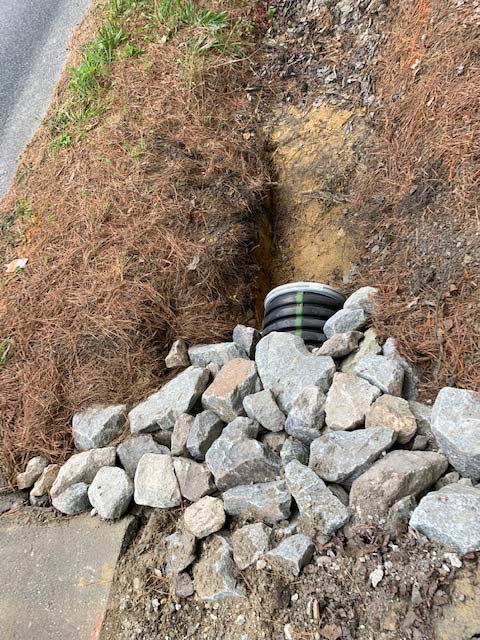Precision Pad Construction for Secure Foundations
Precision Pad Construction for Secure Foundations
Blog Article
Culvert Setup Made Easy: Step-by-Step Guide for Success
Mounting culverts may appear like a simple task, however guaranteeing a successful outcome needs mindful preparation and execution. From selecting the proper culvert size to incorporating appropriate drainage measures, each step in the installation procedure plays a crucial function in the performance and durability of the culvert system. By complying with a systematic approach and taking notice of essential details, the installment can continue efficiently, decreasing possible issues down the line. Stay tuned to uncover the important steps and factors to consider that can make culvert installment a smooth and effective venture.
Choosing the Right Culvert Size
Selecting the proper culvert size is essential for ensuring reliable water flow and architectural stability in culvert installation tasks - Pad Construction. The size of the culvert directly influences the flow capacity of water via the structure. A culvert that is also little can result in flooding and overflow, while one that is also big may lead to reduced water speed, possibly creating sediment accumulation and blockages
To identify the right culvert size, factors such as the watershed location, peak circulation rates, and hydraulic effectiveness need to be meticulously thought about. Estimations based on these parameters aid in selecting a dimension that can appropriately handle the expected water quantity while minimizing the danger of clogs and structural failing.
It is essential to seek advice from engineering guidelines and criteria to make certain that the picked culvert size satisfies the task demands and regional laws (Pad Construction). By selecting the best culvert dimension, task managers can optimize water flow, stop possible issues, and enhance the overall effectiveness and durability of the culvert setup
Preparing the Installment Site
Reliable culvert installation necessitates careful prep work of the installment site to make certain optimal structural support and functionality. Before commencing the installation process, it is essential to remove the website of any type of particles, plants, or blockages that might hamper the culvert's positioning. Making sure a level foundation is vital for the appropriate alignment and security of the culvert. This might include grading the site to develop a smooth, also surface area that can adequately sustain the weight of the culvert and any kind of awaited tons. Additionally, correct compaction of the dirt underneath the culvert is needed to avoid resolving or moving in time.
In addition, it is very important to consider aspects such as dirt composition, groundwater levels, and ecological influences when preparing the installation site. Carrying out a thorough site assessment can aid identify any prospective obstacles or risks that may affect the culvert's performance. By making the effort to prepare the installment website properly, you can aid guarantee a successful culvert installation that meets architectural needs and makes certain long-term functionality.
Placing the Culvert Correctly

The quality at which the culvert is positioned is crucial for maintaining an appropriate incline for water circulation. A progressive slope helps avoid pooling and promotes effective drain. Furthermore, the culvert should be oriented correctly to guarantee that the inlet and outlet are in the proper locations. This positioning is necessary for the culvert to operate properly in taking care of water look at more info circulation.
Backfilling and Condensing the Dirt
Proper backfilling and compaction of the soil around the culvert is important to make sure security and avoid possible problems in the future. Once the culvert is correctly positioned, the next critical step is to backfill the location around it with appropriate material. The backfill product must be complimentary from rocks, particles, and raw material to prevent damage to the culvert. It is advised to use granular material such as sand or crushed rock for backfilling, as it offers good water drainage and compaction residential properties.
After positioning the backfill product, it is essential to portable it in layers of uniform density. Using a compactor or a mechanical meddle, portable the soil carefully to stay clear of damaging the culvert. Compaction aids in reducing the chances of settlement and makes sure consistent support around the culvert. It is crucial to portable the soil evenly on all sides of the culvert to preserve its architectural honesty.
Appropriate backfilling and compaction not just give stability to the culvert but additionally aid in preventing soil erosion and preserving the long life of the culvert system.
Making Certain Appropriate Drain Assimilation
Incorporating reliable water drainage options plays a critical duty in the overall functionality and longevity of culvert installations. Proper drainage integration is important for managing water flow, preventing erosion, and guaranteeing the architectural stability of the culvert system. To accomplish this, it is vital to create a comprehensive drainage strategy that takes into consideration elements such as the quantity of water anticipated, the topography of read this post here the location, and the kind of dirt existing.

Furthermore, integrating attributes like erosion control procedures, such as riprap or greenery, can even more enhance the efficiency of the drain system. By carefully intending and implementing these drain services, culvert installations can work efficiently and stand up to the examination of time.
Conclusion
In conclusion, proper culvert installation is crucial for preserving efficient drain systems. By picking the best culvert dimension, preparing the setup website, placing the culvert appropriately, backfilling and condensing the soil, and guaranteeing proper water drainage assimilation, success can be accomplished. Adhering to these actions will assist make sure the long life and efficiency of the culvert, inevitably adding to the overall success of the drainage system.
Report this page